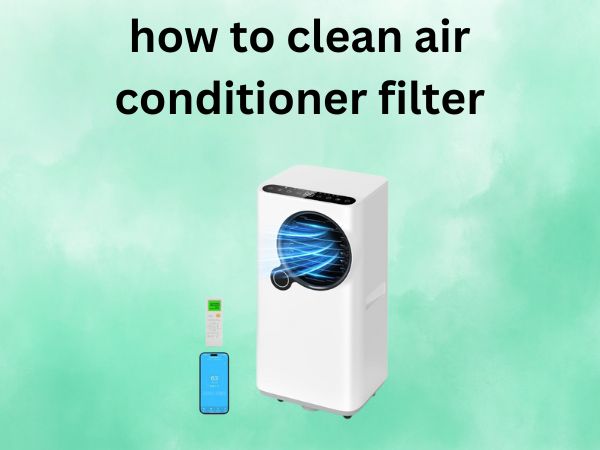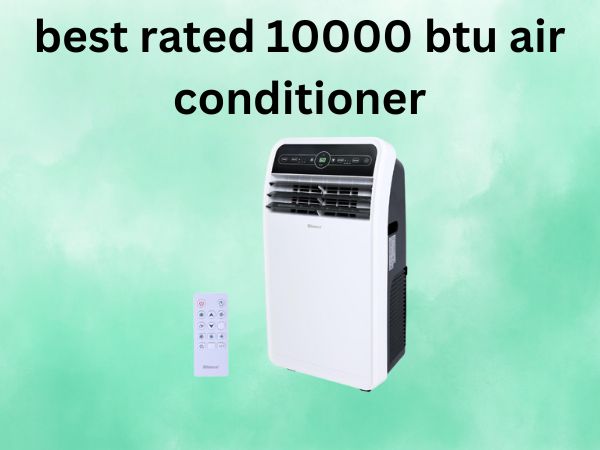How to Clean Air Conditioner Filter [Your Complete Guide to Better Air Quality]
Picture this: you’re lounging in your living room on a sweltering summer day, expecting your AC to deliver that refreshing blast of cool air. Instead, you’re met with weak airflow and a musty smell that makes you wonder if something died in your vents. Sound familiar? The culprit is likely your neglected air conditioner filter, silently choking your system and your wallet.
Cleaning your AC filter isn’t just another boring maintenance task – it’s your ticket to cleaner air, lower energy bills, and a longer-lasting cooling system. Whether you’re a first-time homeowner or someone who’s been putting off this essential chore, this comprehensive guide will walk you through everything you need to know about keeping your air conditioner filter in pristine condition.
Table of Contents
Why Cleaning Your AC Filter Matters More Than You Think
Your air conditioner filter is like the lungs of your cooling system. Just as you wouldn’t want to breathe through a dirty cloth, your AC struggles when its filter is clogged with dust, debris, and whatever else floats around your home. But the impact goes far beyond just air quality.
The Hidden Costs of Neglecting Filter Maintenance
When your filter is dirty, your AC unit works overtime to push air through the clogged material. This extra effort translates directly into higher energy bills – we’re talking about increases of 5-15% on your monthly electricity costs. Over a year, that’s hundreds of dollars literally going up in smoke.
But here’s where it gets expensive: a consistently dirty filter forces your AC components to work harder, leading to premature wear and tear. Your compressor, the heart of your cooling system, bears the brunt of this strain. Replacing a compressor can cost anywhere from $1,500 to $3,000, making that 10-minute filter cleaning session look pretty attractive, doesn’t it?
Health Benefits You’ll Notice Immediately
A clean filter dramatically improves indoor air quality by trapping allergens, dust mites, pet dander, and even some bacteria. If you or your family members suffer from allergies or asthma, you’ll likely notice fewer symptoms and easier breathing within days of cleaning your filter.
Think of your filter as a bouncer at an exclusive club – it decides what gets into your home’s air and what stays out. When the bouncer is doing their job properly, only the good stuff (clean, cool air) makes it through.
Types of Air Conditioner Filters: Know What You’re Working With
Not all filters are created equal, and knowing what type you have determines your cleaning approach. Using the wrong method can damage your filter or render it ineffective.
Disposable vs. Reusable Filters
Disposable filters are typically made of cardboard frames with pleated paper or fiberglass. These are designed for single use and should be replaced, not cleaned. Attempting to clean them often results in tears or reduced effectiveness.
Reusable filters, on the other hand, are built to withstand multiple cleaning cycles. They’re usually made of foam, metal mesh, or washable synthetic materials. These are your cleaning candidates.
HEPA Filters: The Gold Standard
High-Efficiency Particulate Air (HEPA) filters capture 99.97% of particles 0.3 microns or larger. While incredibly effective, most residential HEPA filters are disposable. However, some permanent HEPA filters can be gently cleaned with specific techniques.
Electrostatic Filters: Modern Innovation
These filters use static electricity to attract particles like a magnet draws metal shavings. Most electrostatic filters are washable, making them both eco-friendly and cost-effective over time.
Signs Your AC Filter Needs Cleaning (Don’t Wait for These!)
Waiting until your filter looks like it belongs in a horror movie isn’t the best strategy. Here’s how to spot the warning signs before they become expensive problems.
Visual Indicators That Scream “Clean Me!”
Hold your filter up to a light source. If you can’t see light passing through clearly, it’s time for a cleaning. A grayish or brownish tint across the filter surface is another dead giveaway. Some filters will literally sag under the weight of accumulated debris – definitely past due for attention.
Performance Red Flags
Is your AC running longer cycles to reach the desired temperature? Are some rooms consistently warmer than others? These performance issues often stem from restricted airflow due to a dirty filter. You might also notice increased dust on furniture or that musty smell we mentioned earlier.
Essential Tools and Materials for Filter Cleaning
Good news: you probably have most of what you need already lying around your house. No need for expensive specialized equipment or harsh chemicals.
Basic Cleaning Supplies
You’ll need a garden hose with a spray nozzle, mild dish soap (nothing fancy), a soft-bristled brush (an old toothbrush works perfectly), and clean towels. A vacuum cleaner with a brush attachment can also be helpful for pre-cleaning.
Safety Equipment You Shouldn’t Skip
Safety glasses protect your eyes from flying debris, while rubber gloves keep your hands clean and protected from any nasty buildup. A dust mask is smart if you’re sensitive to allergens or if the filter is particularly grimy.
Step-by-Step Guide: How to Clean Your Air Conditioner Filter
Now for the main event – the actual cleaning process that’ll transform your dirty filter into a clean, efficient air-cleaning machine.
Safety First: Preparing Your AC Unit
Before touching anything, turn off your air conditioner completely. This isn’t just about safety (though getting your fingers caught in a fan isn’t fun) – it prevents the system from trying to run without a filter, which can damage internal components.
Locating and Removing Your Filter
Most residential AC filters are located in the return air duct, often behind a removable grille near your thermostat. Some systems have filters at the air handler unit itself. Check your owner’s manual if you’re unsure – it’s usually clearly marked.
When removing the filter, note which direction the arrows on the frame point. These indicate airflow direction and are crucial for proper reinstallation. Take a photo with your phone if you’re worried about forgetting.
The Cleaning Process That Actually Works
Start by gently vacuuming the filter on both sides to remove loose debris. This prevents you from just pushing dirt deeper into the material during washing.
Next, rinse the filter with your garden hose, starting from the clean side and working toward the dirty side. This helps push contaminants out rather than deeper in. Use lukewarm water – hot water can damage some filter materials, while cold water isn’t as effective at dissolving grime.
For stubborn buildup, mix a small amount of mild dish soap with water and gently scrub with your soft brush. Avoid harsh detergents or bleach, which can break down filter materials or leave residues that reduce effectiveness.
Proper Drying Techniques
This step is crucial and often overlooked. A damp filter can develop mold or mildew, creating bigger problems than you started with. Gently shake off excess water, then lay the filter flat on clean towels in a well-ventilated area.
Avoid direct sunlight, which can warp some materials, and never use a hair dryer or other heat source. Patience is key here – most filters need 2-4 hours to dry completely, depending on humidity levels.
Reinstalling Your Clean Filter
Once completely dry, reinstall the filter with the arrows pointing in the correct direction. A backwards filter won’t work properly and can damage your system. Make sure it fits snugly without gaps around the edges where air could bypass the filter entirely.
Different Cleaning Methods for Different Filter Types
One size doesn’t fit all when it comes to filter cleaning. Each type requires specific care to maintain effectiveness without causing damage.
Foam Filters: Gentle Yet Effective
Foam filters are delicate and can tear easily. Use minimal water pressure and avoid scrubbing aggressively. These filters often benefit from a gentle squeeze (never wring) to remove excess water before drying.
Pleated Filters: Handle with Care
The pleats in these filters trap more particles but are also more fragile. Clean parallel to the pleats, not across them, to avoid collapsing the folds. A soft brush works better than high water pressure for these types.
How Often Should You Clean Your AC Filter?
The “every month” rule isn’t always accurate – your cleaning frequency depends on several factors that are unique to your situation.
Seasonal Considerations
During peak cooling season (summer in most climates), check and clean monthly. Spring and fall might require less frequent attention, while winter storage requires special preparation to prevent damage.
Usage-Based Cleaning Schedule
Homes with pets, smokers, or family members with allergies need more frequent filter maintenance. If you’re doing construction or renovation work, you might need to clean weekly during the dusty period.
A good rule of thumb: check monthly, clean when needed. It’s better to clean a slightly dirty filter than to wait until it’s completely clogged.
Common Mistakes That Could Damage Your Filter
Even with the best intentions, it’s easy to make mistakes that reduce your filter’s effectiveness or lifespan.
The Pressure Washing Trap
High-pressure water can destroy filter materials faster than you can say “oops.” Stick to gentle garden hose pressure – if it would be uncomfortable on your skin, it’s too strong for your filter.
Chemical Cleaners: When to Use and When to Avoid
Harsh chemicals can break down filter materials or leave residues that actually attract more dirt. Stick to mild soap and avoid anything with strong fragrances or bleaching agents.
Maintenance Tips to Extend Filter Life
A few simple habits can significantly extend your filter’s lifespan and maintain peak performance between deep cleanings.
Regular vacuuming removes surface debris before it becomes embedded. Keeping your home clean reduces the overall load on your filter. Simple things like using doormats, regular dusting, and maintaining proper humidity levels all help your filter work more efficiently.
Consider upgrading your home’s air sealing to reduce the amount of outdoor contaminants entering your system. Weather stripping around doors and windows isn’t just for energy efficiency – it also keeps your filters cleaner longer.
When to Replace vs. When to Clean
Even the best-maintained reusable filter won’t last forever. Knowing when to retire your filter prevents performance issues and potential system damage.
Look for tears, holes, or areas where the material has broken down. If the filter frame is warped or damaged, replacement is necessary for proper sealing. When cleaning becomes ineffective – if the filter looks dirty even after thorough cleaning – it’s time for a new one.
Most reusable filters last 6-12 months with proper care, though this varies based on usage and environmental factors.
FAQs
Q: Can I clean a disposable air filter to save money? A: No, disposable filters are designed for single use and attempting to clean them often damages the material or reduces effectiveness. The cost savings aren’t worth the risk to your AC system or air quality.
Q: How long should I wait before turning my AC back on after installing a clean filter? A: You can turn your AC back on immediately after installing a completely dry filter. Just make sure there’s no moisture remaining, as a damp filter can develop mold or mildew.
Q: Is it normal for my filter to smell after cleaning? A: A slight soapy smell that dissipates quickly is normal. However, persistent odors, especially musty or chemical smells, indicate incomplete rinsing or mold growth. Re-clean and ensure thorough drying.
Q: Can I use my AC without a filter temporarily while mine dries? A: Never run your AC without a filter, even briefly. Unfiltered air can damage internal components and allow contaminants to build up in your ductwork. Keep a spare clean filter on hand to avoid this situation.
Q: What’s the white powdery residue on my filter after cleaning? A: This is likely mineral deposits from hard water. Use distilled water for rinsing, or add a small amount of white vinegar to your cleaning solution to help dissolve mineral buildup. Always rinse thoroughly afterward.
Conclusion
Cleaning your air conditioner filter is one of those simple tasks that delivers outsized benefits. With just a few minutes of effort each month, you’ll enjoy cleaner air, lower energy bills, and a longer-lasting AC system. The process itself is straightforward – no special skills or expensive tools required.
Remember, consistency is key. Regular maintenance prevents the buildup that makes cleaning difficult and keeps your system running efficiently. Your lungs, your wallet, and your comfort will thank you for making filter maintenance a priority.
Don’t let a dirty filter hold your comfort hostage. Armed with the knowledge from this guide, you’re ready to tackle this essential home maintenance task with confidence. Your future self – breathing easily in a perfectly cooled home – will definitely thank you.




